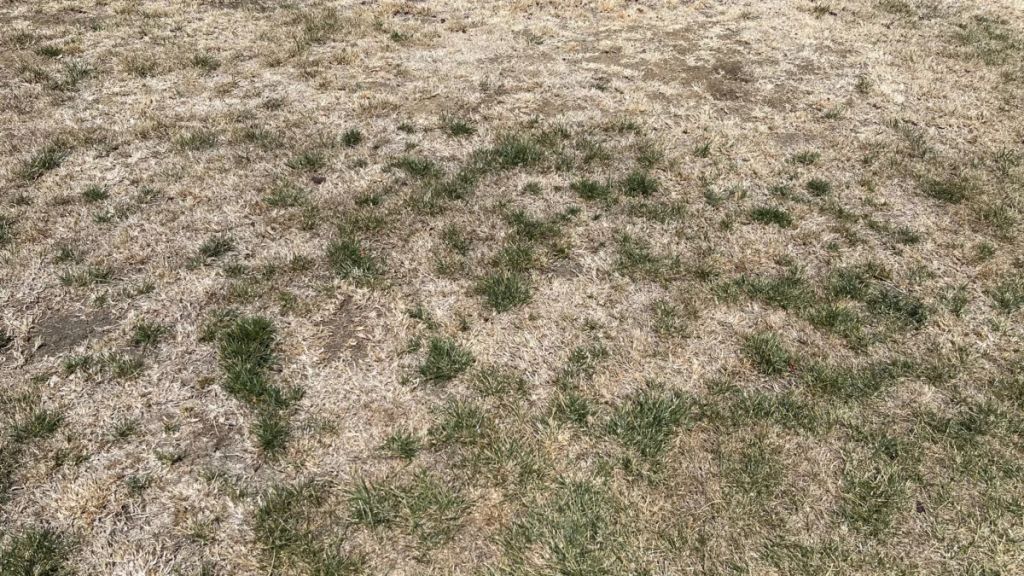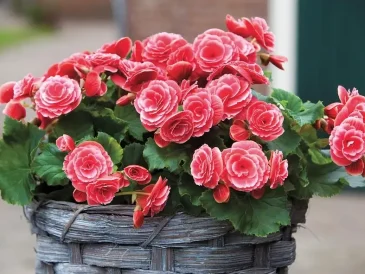It happens every summer. No matter how much new seed you put down or how often you water, there will come a point where your lush green lawn turns into a crunchy brown landscape.
Where once you walked barefoot on dewy grass, you’re now careful to put your shoes on before venturing outside.

Summer temperatures are increasing for longer periods with each passing year. It’s no surprise then that your lawn is more often scorched grass than a soft, green yard.
Along with these soaring temperatures, we’re experiencing longer stretches without rain. Municipalities all over the country ration water during the summer. They impose bans on washing cars and using sprinklers, making it even harder to maintain a green lawn.
Have you ever stopped to think if there might be a better way, an easier way?
Of course, you could let nature take its course, stop mowing altogether and return your lawn to the wild.
Some people do and are rewarded by the scads of wildflowers, birds, bees and butterflies that pop up. And with skyrocketing gas prices, not feeding the lawn mower looks better every day. Plus, you would get that one, two, or three hours back that it takes to mow your lawn each week.

Unfortunately, though, many of us simply don’t have that option.
When I lived in another part of Pennsylvania, I remember coming home one evening to a freshly mown lawn, and a citation stuck on my door. The borough charged me a fine for letting my grass get too long and warned that the next time the borough had to mow it, the fine would double. Sheesh!
Municipality rules or strict HOAs can often stand in the way of any attempts to rewild a lawn in town.
But you have another excellent option that will keep the city council happy, save water, require no mowing, and still look great – creeping thyme.
Thyme? As in the stuff I put on my roast chicken?
Yes, that thyme, or at least a variety of it.
Xeriscaping

Every year, more fed-up yard warriors turn to xeriscaping out of a desire to conserve time and water. Xeriscaping is the use of drought-tolerant plants (most require little or no irrigation to survive) in landscapes. Creeping thyme is one of the more popular ground-covers used in xeriscaping, and it’s not hard to see why.
Benefits of Creeping Thyme as a Ground Cover

- It’s creeping, which means it will spread and fill in your lawn when left to its own devices.
- Creeping thyme is also drought-resistant, so your yard will keep plugging along if you get long stretches without any rain.
- It takes much less water to establish and continue to grow thyme. As anyone who has ever planted grass seed knows, it takes tons of consistent watering for it to take and spread.
- Creeping thyme will outcompete other plants for nutrients and water, choking out weeds that would otherwise look unsightly.
- Like turf, creeping thyme can handle foot traffic, making it an ideal replacement.
- Creeping thyme grows low to the ground, so you don’t have to mow it. (Most varieties don’t reach over 4”.) Although, if you prefer, you can mow once any flowers have died off.
- Most creeping thyme varieties flower, making it a pollinator-friendly turf replacement. Gardeners will enjoy the benefits of having more pollinators around.
- You can eat your lawn.
- And it smells so much nicer than grass. People love to wax on poetically about the smell of freshly cut grass. But I’ll bet they’ve never walked across a sunbaked lawn of creeping thyme.
What Creeping Thyme Varieties Work Best?
There are around 300 cultivars of thyme, and many of them are creeping varieties. Here are a few suggestions for thyme that works best as a ground cover.
Red Creeping Thyme – This is by far the most popular thyme variety used for creeping lawns.
Elfin Thyme – one of the tiniest thymes, Elfin thyme grows slowly, which makes it perfect for planting around areas you don’t want completely covered with thyme, such as stepping stones and walkways.

Hal’s Woolly Thyme – quick-growing creeping thyme that can handle foot traffic and will make for a wonderful lawn.
Of course, there are plenty more varieties to consider before choosing one. It’s best to reach out to a local landscaper for advice on what varieties suit your area best.
Getting Rid of Your Existing Turf
Replacing your existing turf with thyme is no picnic. It requires equal measures of patience and hard work. And purchasing enough thyme plugs to fill in your yard can be expensive. For this reason, you may want to start with a small portion of your yard. You can then choose to expand this area with each passing season.

You need to remove the existing turf by digging it up or killing off the grass. Neither option is easy but will be well worth it when you’re enjoying your summer without worrying about mowing the lawn.
The easiest way of getting rid of your existing turf is less labor-intensive but requires the most patience.
Lay down layers of cardboard or newspaper and then mulch heavily. Water these layers with a hose until they’re completely soaked, then weigh them down with rocks, bricks or pavers.
It will take an entire season for the grass to die underneath your “lasagna” layers, but by next spring, all you need to do is poke holes through any remaining newspaper and plant your thyme plugs.

Leaving the newspaper or cardboard in place to continue to break down acts as a weed barrier, allowing your new thyme plants to get established without competition from weeds.
You’ll need to water your thyme regularly until it begins to grow and spread. Usually, by the second season, you will no longer need to water your thyme, and it will begin to spread much quicker.
To Mow or Not to Mow

After a couple of seasons, your thyme will be a thick, fragrant carpet. Some, but not all, creeping thymes flower. You may choose to mow your thyme once it has finished flowering. Waiting until after the flowers die back allows bees and butterflies access to the pollen. It also assists with self-seeding the soil with thyme seeds from the flowers.
Reasons Why a Creeping Thyme Lawn May Not Be Right for You
Before you run out to your local landscapers to start ordering thyme plugs, take a moment to think about where you live and the area you want to convert with xeriscaping.
- Thyme is a hardy perennial but won’t make it through the winter in USDA Hardiness Zones 3 and lower. If you’re in Zone 4 through 10, you’re good to go.
- If you have an especially shady lawn, creeping thyme may not be the best option. Thyme loves the sun and needs between 4-6 hours of direct sun each day to keep from getting leggy.
- Thyme is also susceptible to root rot, so if your lawn has drainage issues or remains soggy after rain, you may end up losing your thyme.

This wonderfully fragrant herb offers a great solution to those looking to minimize their lawn’s environmental impact. And yes, even though it is a large investment of time and money upfront, you’ll enjoy your low-maintenance lawn for years to come.




